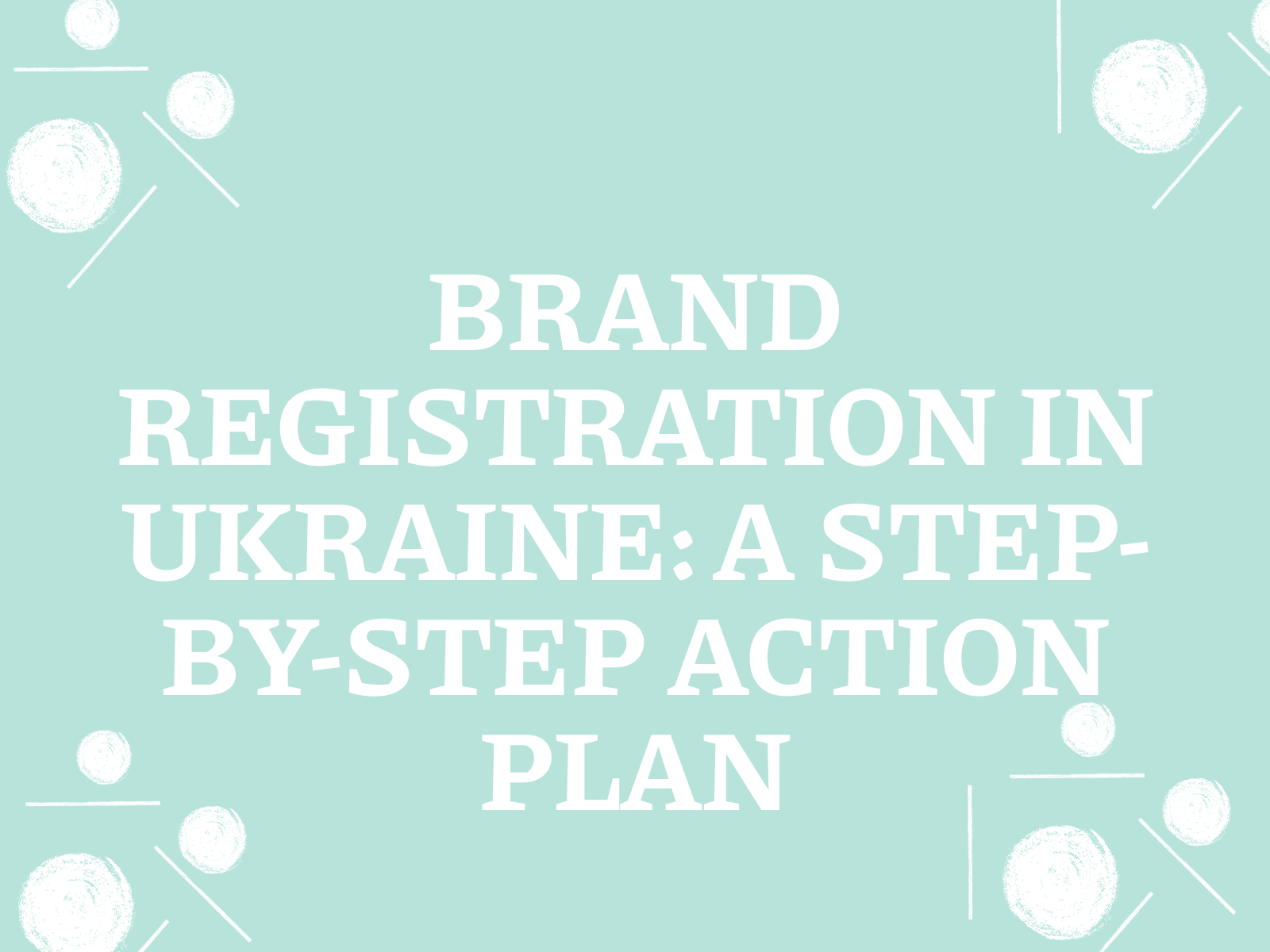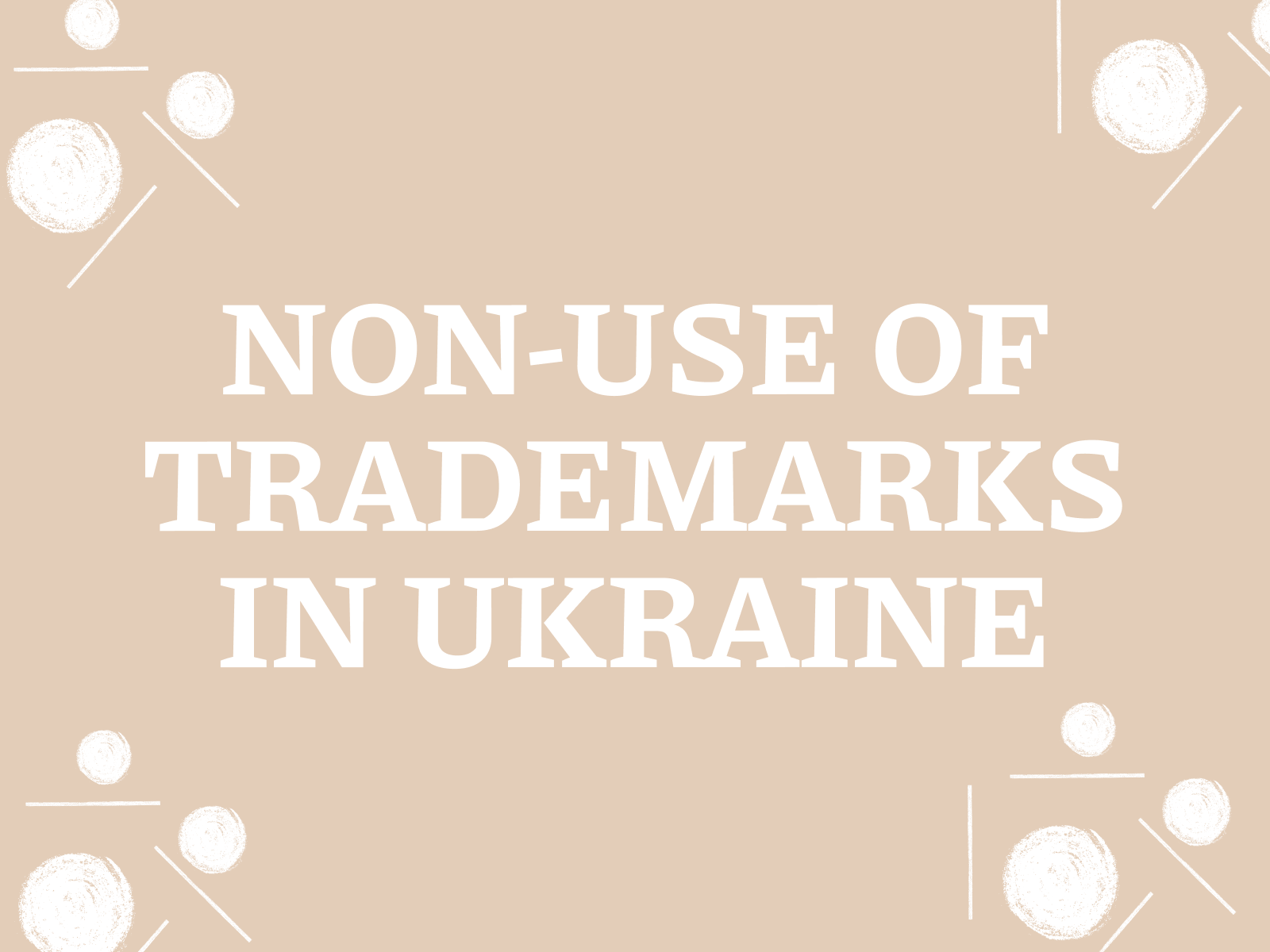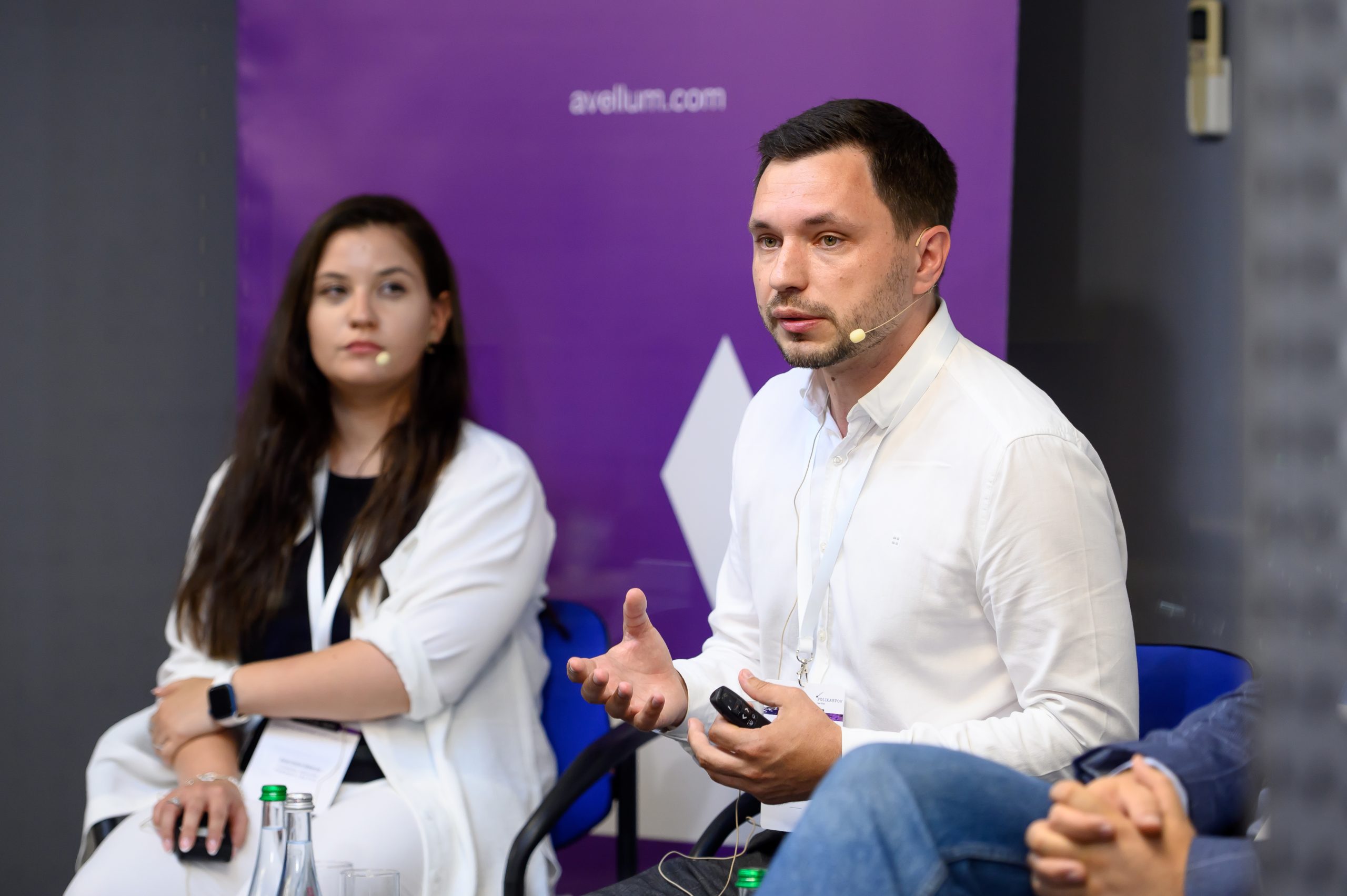Your business is booming, you put your heart and soul into it and create a unique product or service. But how do you protect your intellectual property and prevent competitors from copying your brand? Brand registration is an important step for any entrepreneur looking to strengthen their market position and ensure the long-term success of their business.
In this article, we will provide you with a clear and detailed step-by-step action plan for successfully registering your brand in Ukraine. We will look at all stages of the process, from determining what exactly you want to register to obtaining a certificate at .
Let’s start with the first step – determining what exactly you want to register.
Step 1: Determine what you want to register
Before you start the registration process, it is important to have a clear understanding of what you want to protect. The terms “brand” and “trademark” are often used synonymously, but they are actually different concepts. In this section, we will look at the difference between a brand and a trademark, and find out what elements of a brand can be protected by registering a trademark.
Let’s start by looking at the difference between a brand and a trademark.
Subsection 1.1: The difference between a brand and a trade mark
A brand is a broader concept than a trade mark. It encompasses all aspects of your company, product or service’s identity, including its name, logo, design, values, reputation and the emotions it evokes in consumers.
The trademark is one of the elements of a brand that can be protected by law. It is a designation used to identify and distinguish your goods or services from those of other manufacturers.
What brand elements can be protected by registration
By registering a trade mark, you can protect:
- Your brand name: e.g. Coca-Cola, Apple, Nike.
- Your brand logo: for example, an Apple apple, a Nike checkmark.
- Your brand slogan: e.g. “Just Do It” (Nike), “I’m Lovin’ It” (McDonald’s).
- Thedesign of your product’s packaging: for example, the shape of a Coca-Cola bottle.
- Sounds associated with your brand: for example, the Nokia ringtone.
It is important to understand that it is usually the trademark thatis registered , not the brand as a whole. That is, you can register for protection individual elements of your brand, which can be represented in the form of a designation.
Next, we will look at the different types of trade marks that can be registered.
Section 1.2: Types of trademarks (word, graphic, combined)
Trademarks can be presented in different forms, depending on which element of the brand you want to protect.
The main types are
- Word trademarks: these are trademarks of consisting only of words, letters or numbers. For example, Google, Microsoft, BMW. Example: The name of the company “Nova Poshta” is registered as a word trade mark.
- Graphic trademarks: these are trademarks of consisting of images, symbols, drawings or other graphic elements. For example, the Apple logo, the Mercedes-Benz symbol. Example: The logo of PrivatBank – a green circle with a white bird – is registered as a graphic trademark.
- Combination trademarks: these are trademarks that combine verbal and graphic elements. For example, the Pepsi logo with the company name.Example: The Roshen logo with a horse chestnut and the company name is registered as a combined trademark.
Thetype of trademark youchoose depends on which element of your brand you want to protect. You can register one or more types of trademarks for different elements of your brand.
Once you have decided what exactly you want to register, you need to conduct a similarity search. We’ll talk about this in the next step.
Step 2: Conduct a similarity search
You have decided which element of your brand you want to protect by registering a trade mark. Before filing an application with the UAPTO, you need to make sure that your trademark is unique and not similar to already registered trademarks. To do this, you need to conduct a similarity search. In this section, we will look at why this is important and what resources you can use to conduct a search.
Let’s start by explaining the importance of searching for similar trademarks
Subsection 2.1: Why is it important?
Searching for similar trademarks is an extremely important step before applying for registration at. It can avoid many problems in the future and save you time and money.
Here are the main reasons why it is important to conduct a similarity search:
- Avoiding refusal of registration: if your trademark is similar to an already registered trademark for similar goods or services, the UAPTO may refuse to register it. This means that you will lose the time and money spent on preparing and filing your application.
- Prevention of conflicts with owners of similar If you register a trademark that is similar to an existingtrademark, you may face claims from its owner. This can lead to litigation and the need to change your brand, which can be very costly and damage your reputation.
- Reducing the risk of loss of investment: if you have already invested in brand development and promotion, the loss of the right to the trademark can have serious financial consequences. A similarity search can help you avoid such risks.
Conducting a similarity search is an investment in the security of your brand and your business.
Next, we’ll look at the resources you can use to conduct a similarity search.
Section 2.2: Resources for conducting searches
There are several resources that you can use to conduct a trademarksimilarity search .
Main resources:
- The database of the Ukrainian National Office of Intellectual Property and Innovations (UIPI):This is the official database of registered and filed for registration trade marksin Ukraine. You can search by name, image, or a combination of verbal and graphic elements.
- Link to the URNOVI database: https://base.uipv.org/
- International registers If you are planning to enter the international market, we recommend that you also conduct a search in international registers of trademarkssuch as TMview and DesignView. These databases contain information about registered trademarksin different countries of the world.
- Link to TMview: https://www.tmdn.org/
- Link to DesignView: https://www.tmdn.org/
- Services of patent attorneys: If you are not sure how to conduct a similarity search, you can contact a patent attorney. A specialist will conduct a professional search and provide you with a detailed report.
Recommendations for conducting a search:
- Use different keywords: Try different spellings of your trade mark name , including synonyms, abbreviations and transliteration.
- Pay attention to the classes of goods and services: Make sure you check for similar trademarks in the classes of the Nice Classification that correspond to your business.
- Don’t ignore confusingly similar trademarks: Even if your trademark name is unique, it may be similar in image to an already registered trademark.
A careful search for similarity will help you avoid problems with the registration and protection of your trademark in the future.
Once you are convinced that your trademarkis unique , you can move on to the next step – selecting classes of goods and services (ICGS).
Step 3: Selecting classes of goods and services (ICGS)
You have made sure that your trademark is unique and not confusingly similar to the already registered ones. The next important step is to choose the classes of goods and services for which you want to register your trade mark. This is done in accordance with the International Classification of Goods and Services (ICGS). Choosing the right classes ensures that your trademark is properly protected and allows you to control its use by others. In this section, we will look at what the Nice Classification is and how to choose the right classes for your trademark.
Let’s start by explaining what the International Classification of Goods and Services is.
Subsection 3.1: What is the Nice Classification?
The International Classification of Goods and Services (ICGS) is the classification system used for trademark registration . It was developed by the World Intellectual Property Organisation (WIPO) and includes 45 classes that cover all possible goods and services.
Each class of the Nice Classification contains a list of specific goods or services. For example, class 9 includes computers, software, mobile phones and other electronic devices. Class 43 includes services of restaurants, hotels and cafes.
Why it is important to choose the right classes for your business
- Trademarkprotection applies only to the goods and services specified in the application. If you do not include all classes that are relevant to your business, your trademark will not be protected for other goods or services, even if they are similar to those specified in the application.
- An incorrect choice of classes may result in the refusal of registration or in the limitation of your trademarkprotection .
Resources with information about the Nice Classification:
- WIPO official website: https://www.wipo.int/classifications/nice/nclpub/en/fr/
- UKRNOVI database: https://base.uipv.org/
Next, we will look at how to practically define the classes of goods and services relevant to your business.
Subsection 3.2: How to define classes correctly?
Identifying the classes of goods and services that are relevant to your business may seem like a daunting task. However, there are some practical tips to help you make the right choice.
Practical tips for defining classes:
- Analyse your business: Make a list of all the goods and services you offer or plan to offer in the future. Include not only the main products and services, but also additional, related and ancillary services.
- Use keywords: Identify the keywords that best describe your business and your products or services.
- Refer to the HS database: Using your list of goods/services and keywords, search for relevant classes in the HS database (see the previous section for links to resources). Review the descriptions of the classes and make sure that they are relevant to your activity.
- Consider selecting additional classes: Even if you are confident that you have found a primary class that fits your business, consider selecting additional classes to protect your trademark in the future. For example, if you are currently engaged in the production of clothing, you can additionally register your trademark in the clothing retail services class to protect yourself from possible competitors in the future.
- Consult with a patent attorney: If you have any difficulties in determining the classes of the Nice Classification, it is better to contact a specialist. A patent attorney will help you determine the classes correctly and avoid mistakes that may lead to problems with the registration and protection of your trademark.
Choosing the right classes of the Nice Classification is an important step to ensure proper protection of your trademark. Do not neglect this stage and take it seriously.
Once you have decided on the classes of the Nice Classification, you can move on to the next step – preparing and filing an application for trademarkregistration .
Step 4: Preparing and filing an application
You have determined what you want to register, made sure that your trademarkis unique and selected the appropriate classes of the Nice Classification. Now it’s time to prepare and submit an application for registration of trademark to the UkrainianTrademark andTrademark Office. This stage requires careful attention and compliance with certain requirements for the execution of documents. In this section, we will look at what documents need to be prepared and what methods of filing an application exist.
Let’s start with the list of documents required to register a trademark.
Subsection 4.1: Documents required
To register a trademark in Ukraine, you need to prepare the following documents:
- Application for registration: This is the main document in which you provide all the necessary information about the applicant (you or your company) and about the trade marktrademark you wish to register. The application must contain
- full name or title of the applicant;
- contact details of the applicant;
- trademarkimage (for graphic or combined trademarks ) ;
- a list of goods and services for which the applicant seeks to register the trademark, indicating the relevant classes of the Nice Classification;
- other necessary information, depending on the type of trademark and the specifics of your situation.
- A document confirming the payment of the state fee: registration of a trademark at is a paid service. The amount of the state fee depends on the number of classes of the Nice Classification for which you are registeringa trademark at and the method of filing an application (online or in paper form).
- Power of attorney (if required): if you are filing an application through a representative (e.g. a patent attorney), you will need to provide a power of attorney executed in accordance with the requirements of the law.
Document templates:
- The application form for trademarkregistration and information on the amount of state fees can be found on the official website of the UkrainianTrademark Office: https://uipv.gov.ua/.
Important: The requirements for filing documents are subject to change, so we recommend checking the current information on the website of the Ukrainian National Intellectual Property Office or contacting a patent attorney before filing an application.
In the following, we will look at the ways of filing an application with UkrNIPO.
Subsection 4.2: Methods of filing an application
Once you have prepared all the necessary documents, you can file your trademarkapplication with the UIPI. There are three main ways to file an application:
- Online: you can file an application electronically through the online service of the Ukrainian Trademark Office. This is the most convenient and fastest way to file an application. You can upload all the required documents in electronic format and pay the state fee online.
- By post: you can send the application and all required documents by post to the address of the Ukrainian National Research Institute. In this case, you will need to notarise copies of the documents.
- In person: you can submit the application and all required documents in person at the office of the Ukrainian National Research Institute.
Recommendations for choosing the application method:
- Online application is the most convenient and fastest way to apply. You save time and effort and can track the status of your application online.
- Submitting an application by mail or in person may be a more reliable option if you have doubts about the correctness of the documents or want to get advice from a specialist of the Ukrainian National Research Institute.
After submission of the application, the examination of the application is initiated by the Ukrainian National Research Institute, which includes formal and qualification examination. We will discuss this in the next step.
Step 5: Examination and obtaining a certificate
You have filed an application for trademarkregistration with the Ukrainian Trademark Office – congratulations! Now your application will go through the examination process, during which the Ukrainian Trademark Office experts will check its compliance with the legal requirements and the uniqueness of your trademark. In this section, we will consider the terms of application consideration and the procedure for obtaining a certificate for trademark.
We will start by looking at the timeframes for processing an application by the Ukrainian Trademark Office.
Subsection 5.1: Time limits for processing an application
The timeframe for processing a trademarkapplication at the UAPTO depends on several factors, including the complexity of the trademark, the workload of examiners and the presence of third-party objections.
Approximate timeframe for application processing:
- Formal examination: 1-2 months from the date of application submission. At this stage, the correctness of the application and the availability of all necessary documents are checked.
- Qualification examination: 17-20 months from the date of filing. At this stage,the trademark is analysed bythe UIPDC experts for compliance with the legal requirements and checked for similar or identical trademarks already registered or filed for registration.
- Publication and issuance of the certificate: 1-2 months after successful completion of the examination.
Please note: The above timeframes are indicative and subject to change. For more precise information, we recommend that you contact a patent attorney or monitor the status of your application on the website of the Ukrainian National Intellectual Property Office.
Next, we will consider the procedure for obtaining a trademarkcertificate and its validity period.
Subsection 5.2: Obtaining a certificate and its validity
If your application has successfully passed the examination, UKRNOVI will issue you a trademarkcertificate . This is an official document confirming your exclusive right to use the trademark for the goods and services for which it is registered.
The procedure for obtaining a certificate:
- Publication of the decision on registration: After successful examination, the decision on registration of your trademark is published by the Ukrainian Trademark Office in the official bulletin “Promyslova Vlasnist”.
- Payment of the certificate fee: After the publication of the registration decision, you need to pay the certificate fee.
- Obtaining the certificate: Upon payment of the fee, the Trademark Office issues you a trademark certificate .
Validity of the certificate:
A trademarkcertificate is valid for 10 years from the date of application. After this period, you can extend the certificate for another 10 years by paying a state fee.
Obtaining a trademarkcertificate is the final stage of the registration process and an important step in protecting your brand.
Below we summarise the main aspects of brand registration in Ukraine.
Conclusion
Registering a brand, or more specifically, a trademark in Ukraine is an important step to protect your intellectual property and ensure the success of your business. This process may seem complicated, but it is actually quite simple if you follow the step-by-step action plan we have described in this article.
The main steps of registration
- Determine what exactly you want to register (name, logo, slogan, etc.).
- Conduct a similarity search to make sure your brandis unique .
- Select the classes of goods and services (ICGS) that are relevant to your business.
- Prepare and submit an application to the Ukrainian Trademark Office.
- Wait for the examination to be completed and obtain a trademarkcertificate .
Remember that registering atrademark is an investment in the future of your business. It will help you stand out from the competition, build consumer confidence and increase the value of your brand.
For more information on registering atrademark in Ukraine, we recommend that you read the following articles:
- “Register a trade mark in Ukraine: how to avoid mistakes”
- “Online trademark registration: benefits, risks, instructions “
Don’t put off registering your trademark at until later. Protect your brand today!









